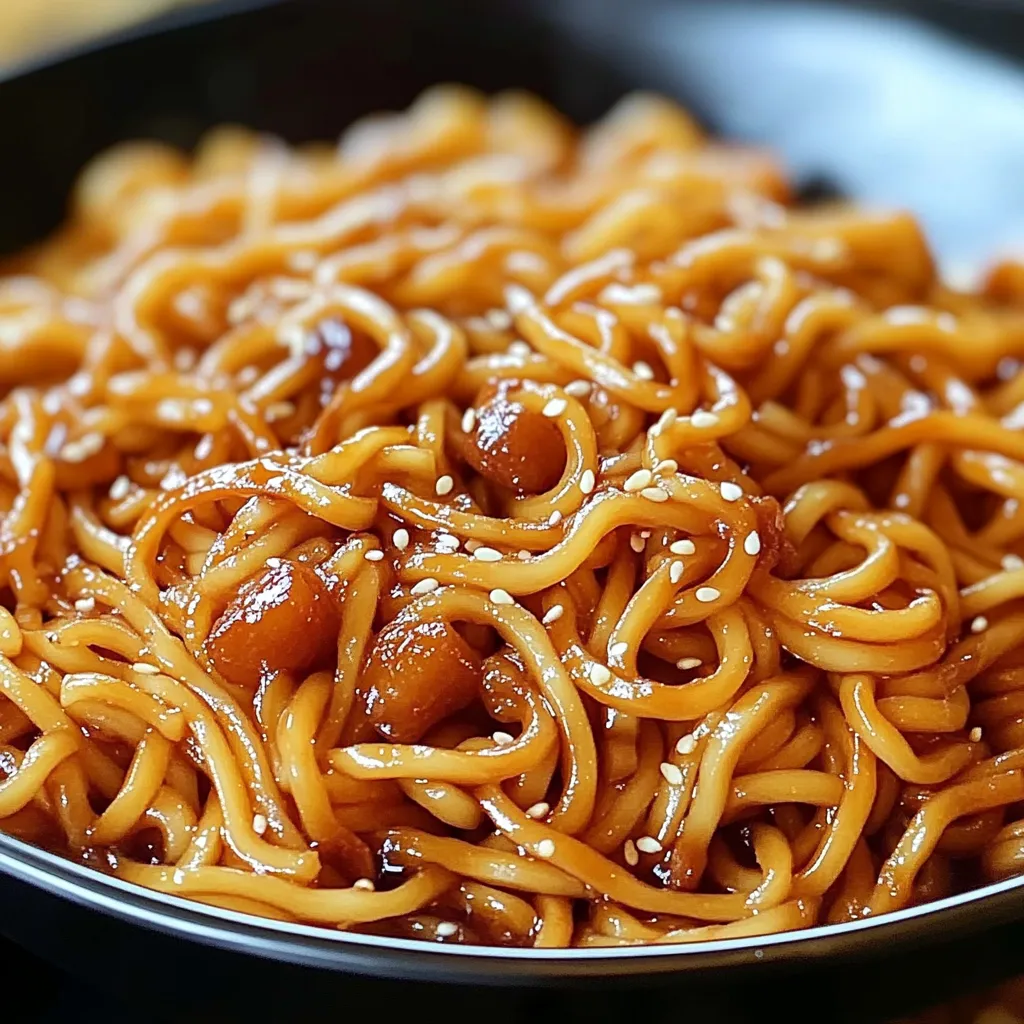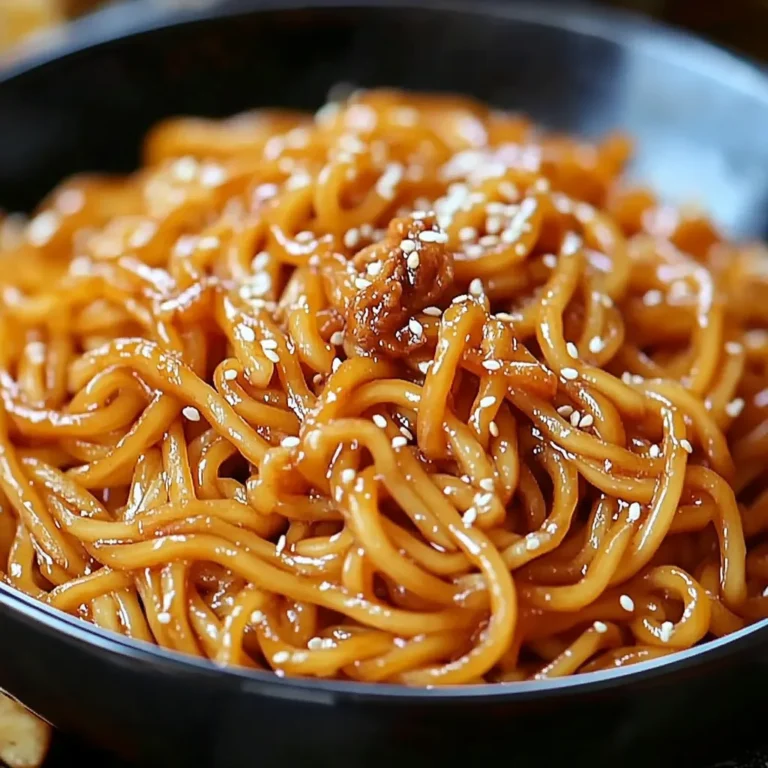1. Introduction
Hibachi noodles have become a beloved staple in Japanese-American cuisine, known for their bold, savory flavors and irresistible garlic-butter aroma. This quick and flavorful dish is a highlight at popular Japanese steakhouses like Benihana and Kobe, where sizzling grills and theatrical chefs bring the noodles to life.
These delicious noodles are typically stir-fried with a blend of butter, garlic, soy sauce, and teriyaki sauce, making them rich, slightly sweet, and packed with umami. Their simplicity and versatility have made them a favorite for home cooks looking to recreate the restaurant experience.
In this article, you’ll learn exactly how to make authentic Hibachi noodles at home. From understanding their origin to mastering every step in the cooking process, this guide will have you serving up a perfect bowl of these savory noodles in no time.
2. Understanding Hibachi Noodles
Hibachi is a traditional Japanese style of cooking that originally referred to a charcoal-heated container used for grilling. However, in modern Western dining, Hibachi has become synonymous with the theatrical, flat-top grill experience offered at restaurants like Benihana. While often confused with Teppanyaki, Hibachi emphasizes grilling over open heat, whereas Teppanyaki is done on a flat iron griddle.
What truly defines Hibachi noodles is their preparation—stir-fried on a hot surface, infused with butter, garlic, and savory sauces. They offer a deliciously smoky, umami-rich experience that’s both nostalgic and comforting.
This fusion-style dish gained popularity in Japanese-American steakhouses, evolving over time with local ingredients like linguine or spaghetti used in place of traditional yakisoba or udon noodles. For insight into the types of noodles used by restaurants, check this Reddit discussion on hibachi restaurant noodles.
Today, Hibachi noodles symbolize more than just a side dish—they’re a cultural fusion, enjoyed for their simplicity, adaptability, and rich flavor profile.
3. Ingredients Breakdown
To achieve that signature hibachi flavor, each ingredient plays a vital role. Here’s a closer look at what you’ll need:
- Noodles: While traditional Japanese restaurants may use yakisoba or udon, many home recipes use linguine or spaghetti for convenience. Choose noodles that hold their texture when stir-fried. Learn more from these expert pasta cooking tips.
- Butter: This is essential for a rich, velvety base. Unsalted butter gives more control over the final seasoning, but salted butter can add depth.
- Garlic: Freshly minced garlic gives the best aroma and flavor. Pre-minced garlic can work in a pinch but lacks the same punch.
- Soy Sauce: Go for high-quality, naturally brewed soy sauce for the best flavor. Low-sodium options are available for dietary needs.
- Teriyaki Sauce: This adds a hint of sweetness and glossiness. You can use store-bought or make your own with soy sauce, sugar, and mirin.
- Sugar: A small amount of sugar balances the saltiness. Use white sugar for a clean sweetness or brown sugar for a deeper molasses note.
- Sesame Oil: Just a drizzle at the end adds a nutty, toasted aroma. It’s powerful, so a little goes a long way.
- Sesame Seeds: These are optional but add a nice crunch and visual appeal.
- Optional Additions:
- Mirin or a splash of rice vinegar for acidity.
- Thinly sliced ginger for added zest.
- Vegetables like carrots, zucchini, or mushrooms for texture and color.
👉 Tip: Always use the freshest ingredients and check sauces for added sugars or preservatives to keep flavors clean and balanced.

4. Step-by-Step Cooking Instructions
Making Hibachi noodles is quick and easy once your ingredients are prepped:
- Prepare the noodles
Cook your noodles in salted water until al dente. Overcooked noodles become mushy when stir-fried, so follow package instructions closely and rinse them under cool water to stop the cooking. - Sauté the garlic
In a large wok or skillet, melt butter over medium-high heat. Add minced garlic and sauté for 30–60 seconds, just until fragrant. Be careful not to let it brown, or it will taste bitter. - Add the noodles and sauces
Toss in your cooked noodles and use tongs to coat them evenly in the garlic butter. Add soy sauce, teriyaki sauce, and sugar, mixing well to distribute flavors. - Season and toss
Keep stirring to prevent sticking. Season with a pinch of salt and pepper to taste. Allow the noodles to absorb the sauce fully as they heat through. - Finish with sesame oil and garnish
Once hot and fully coated, remove from heat. Drizzle with sesame oil and toss again. Transfer to a serving dish and sprinkle with toasted sesame seeds if desired.
Now you’re ready to serve a plate of noodles that tastes just like it came off a sizzling hibachi grill!
5. Delicious Variations and Customizations for Hibachi Noodles
The beauty of Hibachi noodles lies in how easy they are to customize. You can adapt the dish based on your dietary needs or flavor preferences without compromising the core taste.
- Protein Additions: Add grilled chicken, juicy shrimp, or crispy tofu for a hearty upgrade. These proteins complement the garlic-butter base and boost satiety.
- Vegetable Inclusions: Stir in vegetables like zucchini, mushrooms, or broccoli to enhance texture and nutrition. Lightly sauté them before adding the noodles to keep them crisp yet tender.
- Spice Adjustments: If you enjoy heat, sprinkle in chili flakes or stir in a bit of sriracha. This creates a spicy twist without overwhelming the original umami-rich flavor.
- Vegan or Gluten-Free Options: For a vegan version, use plant-based butter and swap teriyaki for a vegan alternative. Choose rice noodles or gluten-free tamari instead of soy sauce to make it gluten-free. A quick tip: Always check labels on sauces to ensure they’re allergy-friendly.
6. Serving Suggestions for Hibachi Noodle Meals
To serve Hibachi noodles like a restaurant, think in combinations and contrast.
- Pairing with Other Hibachi Dishes: These noodles pair beautifully with fried rice, grilled steak, teriyaki chicken, or even hibachi vegetables. You can also combine it with this professional Hibachi noodle recipe video to get plating inspiration.
- Recommended Sauces: Add a side of Yum Yum sauce or ginger sauce to dip proteins or drizzle over your noodles. These sauces bring a creamy or zesty contrast that enhances the meal.
- Presentation Tips: Serve noodles on a warm plate with toasted sesame seeds and green onions for garnish. Using chopsticks or a bamboo serving dish gives it an authentic Japanese steakhouse feel.
7. Storage and Reheating Tips for Leftover Hibachi Noodles
Leftover Hibachi noodles can stay fresh and delicious with the right storage methods.
- Storage: Cool the noodles completely and store them in an airtight container. They will keep in the refrigerator for up to 3 days. Avoid leaving them uncovered to prevent drying out.
- Reheating Techniques: For best results, reheat in a skillet over medium heat with a splash of water or extra soy sauce. This helps restore moisture and keeps the noodles from getting too soft or sticky.
- Shelf Life Consideration: Noodles made with fresh ingredients typically hold well for a few days, but avoid freezing as it may affect the texture negatively. If you’re meal prepping, consider storing the sauce separately and tossing fresh before serving.

8. Common Mistakes to Avoid When Making Hibachi Noodles
Making Hibachi noodles at home is simple, but a few common errors can affect the outcome.
- Overcooking the Noodles: Overcooked noodles become soggy and break apart during stir-frying. Always cook to al dente and rinse to stop further cooking.
- Using Too Much or Too Little Sauce: The noodles should be coated but not swimming in sauce. Measure sauces accurately and taste as you go.
- Not Balancing Flavors: Forgetting the sugar or teriyaki may result in a salty, unbalanced dish. The sweet-savory ratio is key to getting that classic Hibachi flavor.
- Skipping Sesame Oil: This oil adds a deep, toasted aroma and should be added at the end, not during high-heat cooking. It’s a finishing oil, not a base.
9. Frequently Asked Questions About Hibachi Noodles
- What type of noodles are best for Hibachi Noodles?
Traditional Hibachi recipes use yakisoba or udon noodles. However, many home cooks prefer linguine or spaghetti due to accessibility. The key is choosing noodles that hold up well when stir-fried. - Can I make Hibachi Noodles ahead of time?
Yes! Cook and cool the noodles ahead of time, and prep the sauce separately. Combine and reheat when ready to serve. This method is ideal for meal prepping or quick weeknight dinners. - Are Hibachi Noodles spicy?
Not by default. They are typically savory and sweet with no heat. However, you can add red pepper flakes, hot sauce, or even a dab of sriracha for spice. - How do Hibachi Noodles differ from Lo Mein?
Lo Mein uses softer noodles and often includes more vegetables and sauce. Hibachi noodles are drier, more buttery, and cooked on a flat grill or skillet, giving them a slightly smoky taste. - Can I make this dish gluten-free?
Absolutely. Replace soy sauce with gluten-free tamari and choose gluten-free noodles. Also, ensure the teriyaki sauce is gluten-free or homemade with cornstarch, brown sugar, and tamari.
10. Conclusion
Hibachi noodles are a simple yet flavorful dish that brings the magic of Japanese steakhouses into your kitchen. They’re incredibly versatile, quick to prepare, and easy to customize to fit any diet or craving.
Whether you’re looking for a quick weeknight dinner or the perfect side for a hibachi-inspired meal, these noodles deliver every time. Try experimenting with different ingredients, and don’t forget to share your unique twist on this classic recipe!
PrintHibachi Noodles Recipe: A Flavor-Packed Japanese-Inspired Dish
Quick and flavorful Japanese-style Hibachi noodles tossed in garlic butter, soy, and teriyaki sauce.
- Prep Time: 10 minutes
- Cook Time: 10 minutes
- Total Time: 20 minutes
- Yield: 4 servings
- Category: Main Dish / Side Dish
- Method: Stir-Fry
- Cuisine: Japanese-American
- Diet: Vegetarian
Ingredients
– 1 lb linguine (or yakisoba/udon)
– 3 tbsp butter
– 1 tbsp minced garlic
– 3 tbsp sugar
– 4 tbsp soy sauce
– 1 tbsp teriyaki sauce
– Salt & pepper to taste
– 1 tbsp sesame oil
– Sesame seeds (optional)
Instructions
1. Cook noodles al dente and set aside.
2. Melt butter in skillet, sauté garlic until fragrant.
3. Add noodles, toss to coat.
4. Add soy sauce, teriyaki, sugar, and seasoning.
5. Toss until evenly coated.
6. Drizzle sesame oil and garnish with seeds.
Notes
Use rice noodles for gluten-free. Add protein or veggies for a complete meal. Don’t skip sesame oil!
Nutrition
- Serving Size: ~380 kcal
- Sugar: 9g
- Sodium: 950mg
- Fat: 14g
- Saturated Fat: 6g
- Carbohydrates: 55g
- Fiber: 2g
- Protein: 8g
- Cholesterol: 25mg


